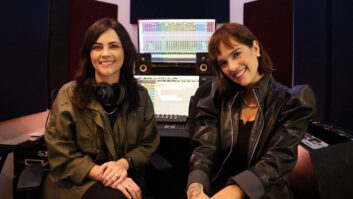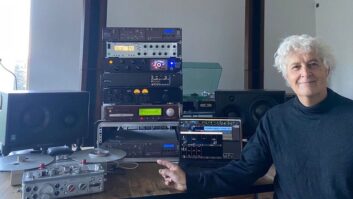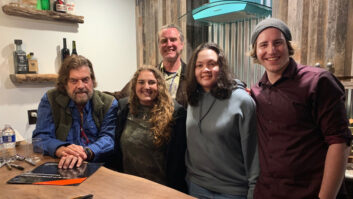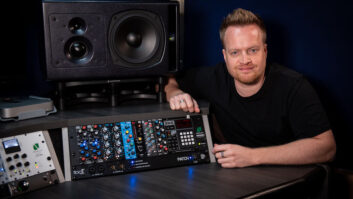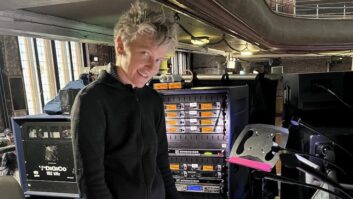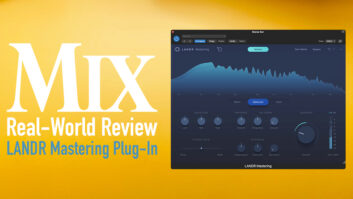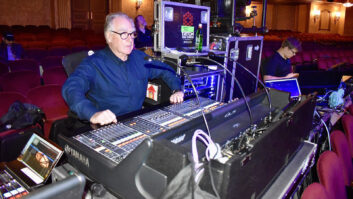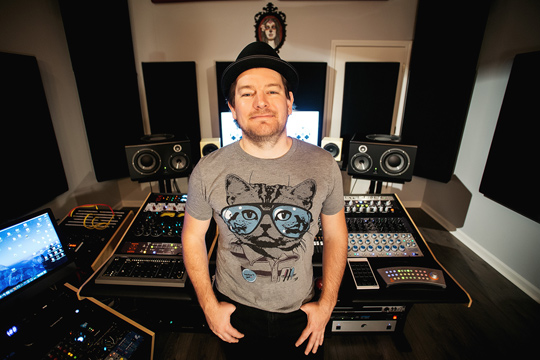
Edmeston, NY — April 26, 2016 — Whether it’s recording, mixing or mastering, engineer Nathan Hamiel puts his extensive collection of DangerousMusic gear through its paces to get the sound his clients desire. Starting out with the Dangerous D-BOX and BAX EQ, Hamiel eventually moved to the Dangerous MONITOR ST with the CONVERT-2 D-to-A converter as his monitor controller when he built The Freq Zone studios in Jacksonville, Florida. He added the Dangerous MASTER and LIAISON for the studio’s mastering setup, and then the Dangerous COMPRESSOR too, which he uses during every session. “I love the CONVERT-2,” states Hamiel about the Dangerous D-to-A he has integrated with his Dangerous MONITOR ST controller.
“I actually did a shoot out with it against a few other DACs,” he reveals. “There’s something about the CONVERT-2 that is hard to explain. I know it sounds better, but it feels better too. So whatever’s happening inside of that thing, I have no idea engineering-wise, I just know that using it as the first step in my analog mastering chain, the audio feels better and that’s what music is all about at the end of the day.”
After using the Dangerous COMPRESSOR on various projects, Hamiel recalls, “I realized, ‘Wow, I don’t know how I lived without this.’ I think one of the most interesting aspects to the Dangerous Compressor is that it’s probably the best vocal tracking compressor ever made. Most of the time when you’re doing any kind of work – whether it be recording, mixing, mastering, or whatever – it’s important to have pieces of gear that compliment each other, so that no matter what I switch out with some of my analog gear that has color to it, the Dangerous stuff, like the Dangerous Compressor is always going to be there, because it’s going to complement whatever other piece of gear that I may end up using,” he adds.
“For mastering work, I think the ‘monitor controller’ is one area people don’t really focus on as much, for example being able to gain match inputs like I can with the Dangerous MONITOR ST. You’re sitting there working on a song, you want to know if you’re making it better. How do you know if you’re making it better? The best way to know that you’re making it better is to listen to the mix of the song-before your processing. And having the mix on a separate input on the MONITOR ST allows you to quickly A-B back and forth to determine whether it’s actually making it better or not. People have come up with ways in the software to try to do that, but all of them have issues. With the MONITOR ST it’s instantaneous-you don’t have to pull up another plugin, you don’t have to click around on the screen.”
He continues, noting that when comparing tracks, “You want to have a level match, which the MONITOR ST allows you to do. You can gain down input 4 that you’re listening to, because the track you are working on is going to be louder in many cases. So you’re making a proper judgment.”
Hamiel also feels the same about comparing equipment in his processing chain, and that the Dangerous LIAISON is the answer for this task, “The quicker you can do the comparison, the more likely it is you’re going to notice differences and potential problems. If you had a patch bay, and you have a compressor plugged into that patch bay, and you’re processing through it, and you decide, ‘Well, let me stop play back, reach over to the patch bay and un-patch the compressor and listen to it again’ – in the amount of time it took you to do that, you aren’t going to be able to properly remember that reference as easily, or at all in some cases. While on the Dangerous LIAISON I am able to just press the button on and off and I can instantly hear the difference.
Describing how he sets up and uses the Dangerous MASTER for his mastering projects with the built-in Mid-Side processing (called “S&M” on the Dangerous MASTER), Hamiel notes, “Inserts two and three on the MASTER are A and B on the LIAISON. So, if I hit the MS button on the MASTER, now buss A on the LIAISON is set up for mid-side processing. So any equipment that I input on that entire buss is Mid-Side. And then buss B is obviously my normal serial buss. I don’t do a lot of mid-side compression outside of the box, it’s mostly EQ. If the mid-signal feels a little muddy, for example the vocal seems a little ‘woofy’-I can reach in there and EQ it without potentially affecting the guitars on the side. I always leave the S&M switch plugged in on the MASTER and I just choose from on the LIAISON what equipment I want to put into which buss. That makes it simple.”
Recalling his experience trying the BAX EQ out for the first time Hamiel recalls, “I think the BAX EQ is a very no-nonsense device and it’s really hard to make anything sound bad. My first impression was: with just a couple clicks here on the knob I’ve been able to improve something, and it took very little effort. One thing I really like the BAX EQ is the high-pass filter. I think that the settings are chosen very well, and it seems to allow you to cut some of the super low frequencies without reaching up too far and affecting too much, things that would take away from the song.
“I really like the ability to just have a gentle lift for the material using the filters on the BAX. Sometimes that’s all that’s needed. It’s very gentle, but it makes a difference. I love pieces of gear that subtly makes the material feel different -it may not sound brighter or something, but the material feels better because of the way the gear works.”
Speaking about his plan to build a commercial studio, “My intent was to create a real nice mastering studio, then it started morphing into covering other things,” explains Hamiel about the genesis of his Freq Zone Studio. “I initially wanted to build the room because people are doing so much recording at home, a lot of DIY stuff. I wanted to build a room that focuses on the finalization of audio in whatever context that means. I teamed up with my friend Daryl Phenneger,” Hamiel continues, “who’s an engineer too, and we started recording at the studio as well. When came time for me to build a real analog mastering rig, there were a couple different options,” says Hamiel, “but what really excited me was the combination of the Dangerous MASTER and LIAISON. I met with Bob Muller at Sweetwater’s Gear Fest, and we had a chat about it and ended picking up those two pieces at the same time and later the Dangerous COMPRESSOR too. I almost didn’t think I needed the Dangerous COMPRESSOR until after I got it.”
More information on Nathan Hamiel and The Freq Zone Studio visit: freqzone.com
About Dangerous Music
Dangerous Music, Inc. designs and builds award-winning hardware products that are indispensable to any DAW-based recording, mixing or mastering environment. The Company pioneered the concept of the dedicated analog summing buss for digital audio workstations with the Dangerous 2-BUS in 2001. Today, Dangerous Music offers a wide range of products for recording, mastering, mixing and post-production facilities, all designed and built with mastering-quality standards and a practical aesthetic. Key products include the Dangerous 2-BUS+, Dangerous 2-BUS LT, Dangerous MONITOR ST-SR, Dangerous D-BOX, Dangerous MASTER, Dangerous LIAISON, Dangerous SOURCE, Dangerous BAX EQ, Dangerous COMPRESSOR, and the Dangerous CONVERT-2 and CONVERT-8 digital-to-analog converters.
For more information on Dangerous Music visit www.dangerousmusic.com phone 845-202-5100 or email: [email protected]
All trademarks are the property of their respective holders. Description and specifications are subject to change without notice.
